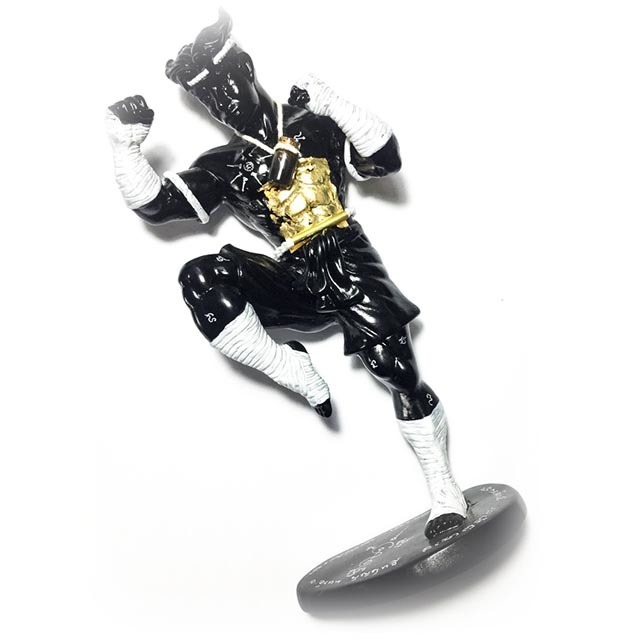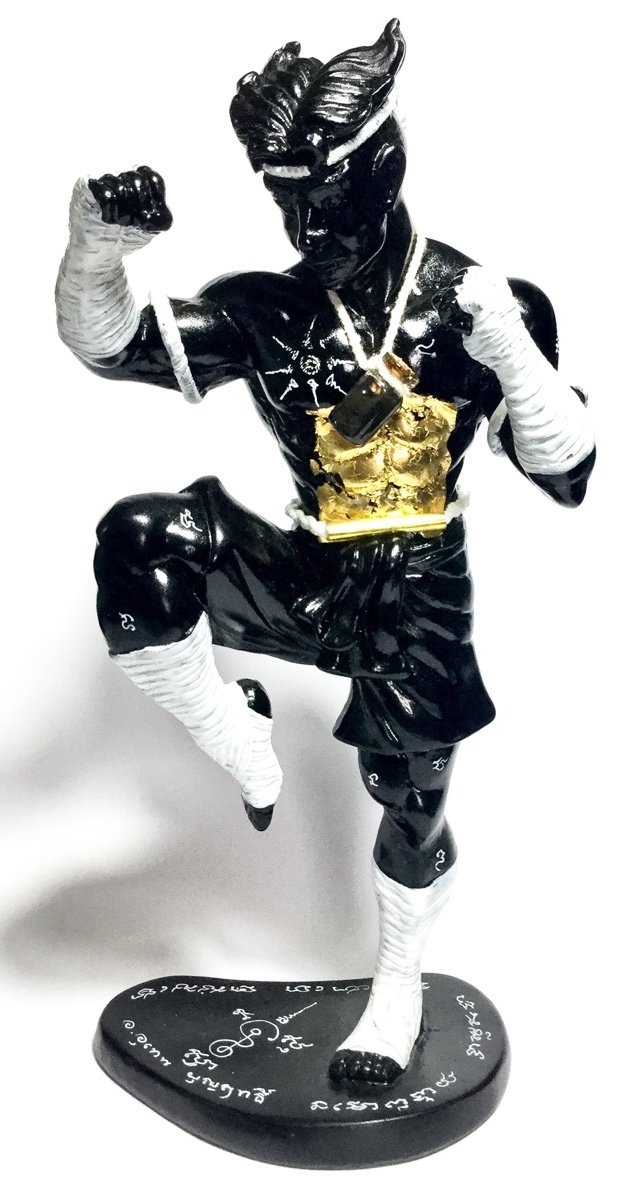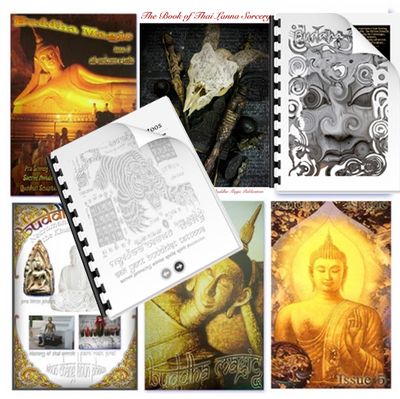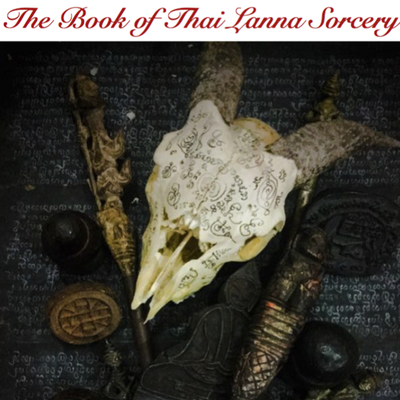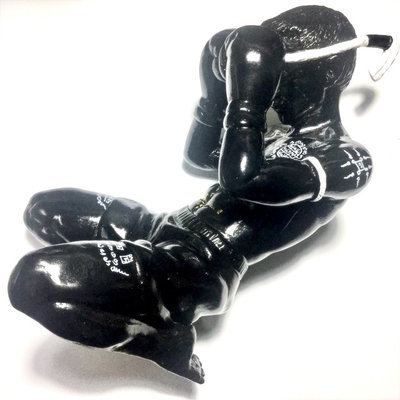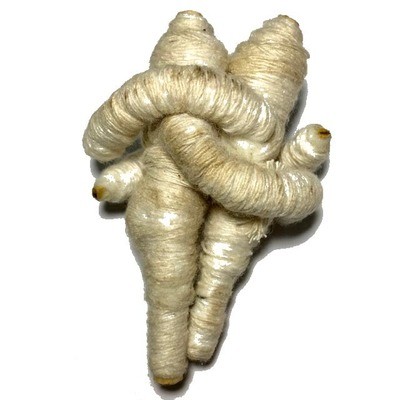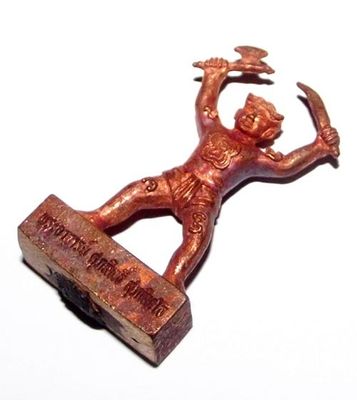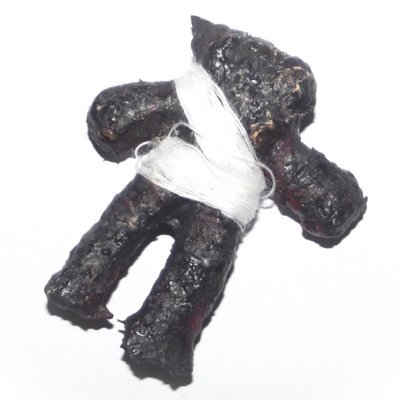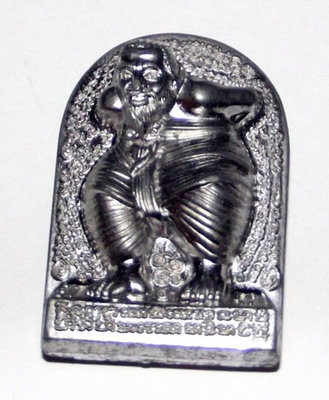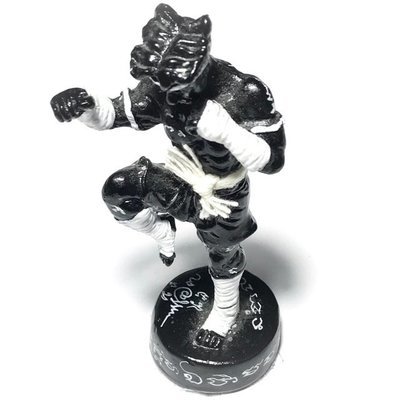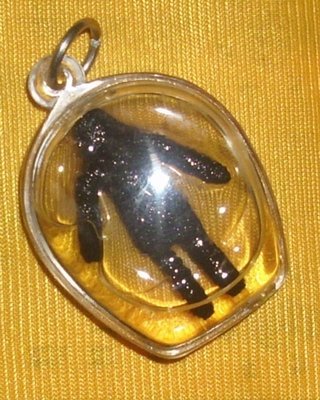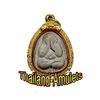

Thailand Amulets
Thai Buddhist and Magical amulets for Wealth, Health, Love and Happiness.
Vast Selection of Amulets
We have a vast selection of over 4000 different kinds of Sacred Amulets and Bucha Items, including Buddha Image, Loi Ongk statuettes, Buddhist Monk Coin Amulets, Takrut Charms, Nam Man Prai Oils, Mai Kroo Wands, Mitmor Ritual Knife, Lek Lai Kaya Siddhi Elemental Substance, Kumarn Tong, Gambling Amulets, Mae Nang Prai, Muan Sarn Sacred Powder Amulets, Palad Khik, Animist Charms, Necromantic Amulets, Buddhist, Animist, Brahman and Necromantic Amulets.
Hun Payont Nai Khanom Tom Thai Sak Yant Warrior in Fighting Posture + Nam Man Prai + Takrut 9.5 Inches High - Ajarn Uten
Nine inches high Bucha Statue empowered as the Hun Payont Nak Muay (Fighting Posture Version) Necromantic Muay Thai Kickboxer Warrior Ghost. The Bucha Statue measures 9.5 Inches High, 4 inches deep base stand, and 3 Inches wide, and has a small bottle of Nam Man Prai with Pong Sanaeh Ya Faed powders tied around the neck, and a Takrut Yantra scroll spell bound around a waistcord tied to his waist, with white Sincana cords, as a spellbound element of protection and invincibility, and luck-bringer.
The effigy is standing with one leg raised poised to pounce and punch. The Hun Payont Nai Khanom Tom Muay Thai Warrior is covered with Sak Yant Tattoo Sacred Geometry Spell Inscriptions, from its creator, Ajarn Uten. Nai Khanom Tom is considered the Father of Muay Thai, and can be prayed to using this Bucha statue, if you are a practitioner of Muay Thai.
Nai Khanom Tom
According to Thai folklore at the time of the fall of the ancient Siamese capital of Ayutthaya Kingdom in 1767, the invading Burmese troops rounded up thousands of Siamese and took them to Burma as prisoners. Among them were a large number of Thai boxers, who were taken to the city of Ava.
In 1774, in the Burmese city of Rangoon, the Burmese King Hsinbyushin (known in Thai as "King Mangra") decided to organize a seven-day, seven-night religious festival in honor of Buddha's relics. The festivities included many forms of entertainment, such as the costume plays called likay, comedies and farces, and sword-fighting matches. At one point, King Hsinbyushin wanted to see how Muay Boran would compare to the Lethwei (Burmese Boxing).
Nai Khanomtom was selected to fight against the Burmese champion. The boxing ring was set up in front of the throne and Nai Khanomtom did a traditional Wai Kru pre-fight dance, to pay his respects to his teachers and ancestors, as well as the spectators, dancing around his opponent.
This amazed and perplexed the Burmese people, who thought it was black magic. When the fight began, Nai Khanomtom charged out, using punches, kicks, elbows, and knees to pummel his opponent until he collapsed.
However the Burmese referee said the Burmese champion was too distracted by the dance, and declared the knockout invalid. The King then asked if Nai Khanomtom would fight nine other Burmese champions to prove himself.
He agreed and fought them all, one after the other with no rest periods in between. His last opponent was a great kickboxing teacher from Rakhine. Nai Khanomtom mangled him by his kicks and no one else dared to challenge him.
King Mangra was so impressed that he allegedly remarked, "Every part of the Siamese is blessed with venom. Even with his bare hands, he can fell nine or ten opponents. But his Lord was incompetent and lost the country to the enemy. If he had been any good, there was no way the City of Ayutthaya would ever have fallen."
King Mangra granted Nai Khanomtom freedom along with either riches or two beautiful Burmese wives. Nai Khanomtom chose the wives as he said that money was easier to find. He then departed with his wives for Siam.
Other variations of this story had him also winning the release of his fellow Thai prisoners. His feat is celebrated every March 17 as Boxer's Day or National Muay Boran Day in his honor and that of muay boran.
Today, some have wrongly attributed the legend of Nai Khanomtom to King Naresuan, who spent his youth as a royal hostage in Burma while Ayutthaya was a Burmese vassal. However, Nai Khanomtom and King Naresuan lived almost two centuries apart.
This Hun Payont Bucha statue is of course highly recommendable for Looskit of Sak Yant Thai Temple Tattoos and for Practitioners of Muay Thai, for use in Wai Kroo Bucha to the Lineage of Gurus of your school, as well as to call as an invisible Magical Companion to assist you in gaining Victories and fulfilling your ambitions.
Above Pic; Yant Gao Yord for Kong Grapan Chadtri Klaew Klaad and Gae Aathan Magick is inscribed as a Sak Yant Thai Temple Tattoos on the back of the Warrior.
This edition is a very special never-before-seen limited series from Ajarn Uten, which has now become as famous as it is rare to find. it is understandable, due to the powerful effect which the Hun Payont emanates, as well as its Aesthetic Beauty, which cannot go unnoticed by any devotee of Muay Thai.
The statue has received empowerments over various months of meditative Kasina Staring, to invoke the life within the statues. The Invocation Summoning, Awakening and Turning of the Four Elements was performed to Reanimate Living Magic within the Static Form, according to the Ancient Grimoires and Magical Formulas of the Wicha.
The full formula of Invocations for the Kata Akarn Sam Sip Sorng were performed for reanimation of the spirit within the effigy. This is an essential part of Necromantic Empowerment with all Humanoid and Animal form amulets which are imbued with a resident spirit.
This special edition series included these large 9 inch high standing versions, with raised leg poised ready to kick, and fists raised, a medium size 3 inch Wai Kroo version, seated kneeling with hands raised to the forehead, an 8 inch high Wai Kroo model, also in kneeling posture with hands raised to forehead. The 8 inch Wai Kroo version is very large because the warrior is kneeling, and is the largest of all models.
Each statue has recieved the hand made inscriptions of Sacred Yant, and Khom Agkhara, as Ajarn Uten empowered them during the final Blessing Ceremony, and have recieved a gold leaf pasted onto the chest of the Hun Payont Warrior.
You can use the Jua Jai Pra Apitam Kata (heart mantra of the Abhidhamma), to empower the Hun Payont Ta Ruay and charge him up with power;
SANG WI TĀ BU GA YA BA
To Chant this 1, 3, 5, 7, 9, or even better, 108 Times, is especially powerful for this Incantation.
The Ancient Wicha Hun Payont is intended for use as a personal ‘Fetch’. Fetch is an Occult Terminology, referring to a personal obedient assistant in the spirit world, which has a physical form to inhabit in Talismanic Form. The Thai Hun Payont, is quite comparable to a Golem, who watches over you and obeys your commands.
In Jewish folklore, a Golem (/ˈɡoʊləm/ goh-ləm; Hebrew: גולם) is an animated anthropomorphic being, magically created entirely from inanimate matter. The word was used to mean an amorphous, unformed material (usually out of stone, wood, rattan or clay) in Psalms and medieval writing. (Wikipedia).
In Siam, the Hun Payont was traditionally made using bound rattan, straw, or molded froom earthen clay, and even cast metal statues are found to be used, with different ‘Wicha’ (Sorcerous Methods of Empowerment), in order to perform successful reanimation of the Effigy.
Kata Pluk Hun Payont (Awaken the Hun Payont)
Om Pluk Maha Pluk Goo Ja Pluk Phu Payont Duay Jae Dti Aa Gang Naa Ma Payont Ni So Sa A Naa Ma Dtae
Kata Bucha Hun Payont
So Sa A Ni So Sa A Ni Sa A Ni So A So A So Ni Ni Sa A So Ni So A So A Ni Yo Sa A A Ni So Sa Sa Ma Su Chant 9 Times
Before taking the Hun Payont into the house, you must light 16 Incense sticks and pray to the Jao Tee (local Devas and Spirit Guardians) and inform them that the Hun Payont is another welcome member of the Family.
For Bucha to Hun Payont - Light one stick of Incense, and chant the following Kata;
Jijeruni Jidtang Jaedtasigang Iibpang Nimidtang Por Payont Ta Ruay Aakajchaahi Aehi Aehi Na Ma Pa Ta Na La Poo Dtaa
Kata for giving food and offerings
Yanginji Jidtang Itawaa Arungwaa Pochanangwaa Punchandti Aehi Na Ma Pa Ta Na La Poo Dtaa
You can be flexible with what you offer, depending on what is convenient or what you feel your Deities will like to receive. Light incense sometimes, and chant the Kata often. Some people also offer Whiskey and Fresh boiled pork on Banana Leaf or Pandan leaf.
Kata for asking permission to use the Hun Payont to help complete a mission or other task.
Puttang Mahaa Araatanaanang Atitdthaami Puttang Mahaa Bprasittimae Tammang Mahaa Aaraatanang Atidthaami Tammang Mahaa Bprasittimae Sangkang Mahaa Aaraatanaanang Atidthaami Sangkang Mahaa Bprasittimae
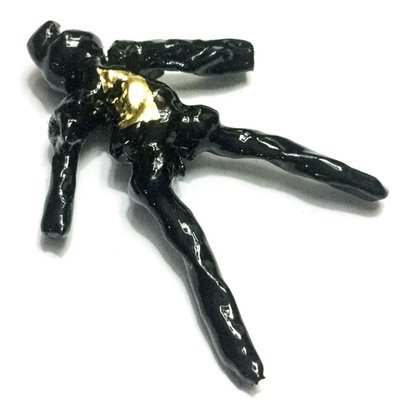
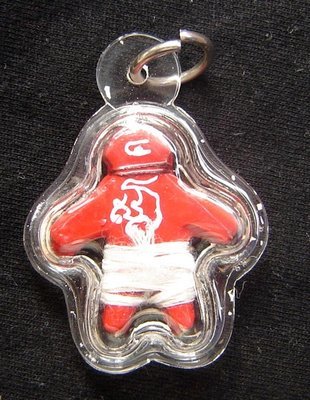
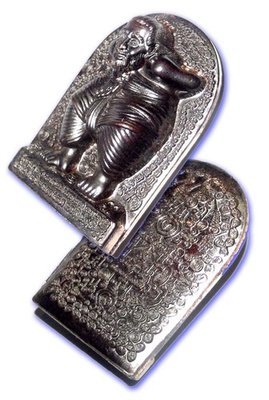
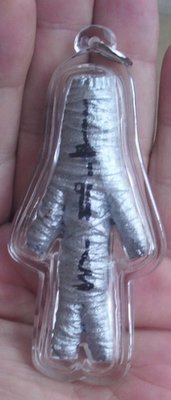
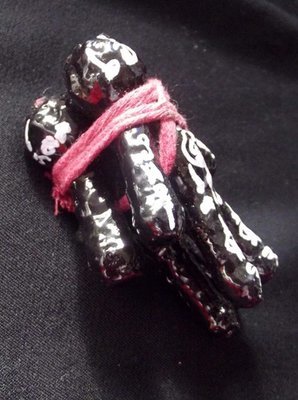
Contact Us
Follow Us on Youtube
About Us
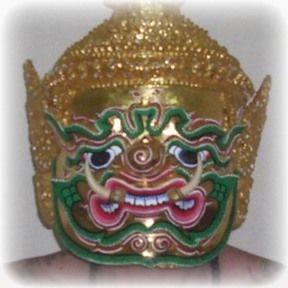
Ajarn Spencer
Proprietor
Thailand Amulets is owned and Administrated by Thai Occult and Amulet expert, Ajarn Spencer Littlewood who guarantees only authentic blessed amulets, and a free gift with every order, as well as his safe delivery or money back guarantee. https://facebook.com/ajarnspencer
